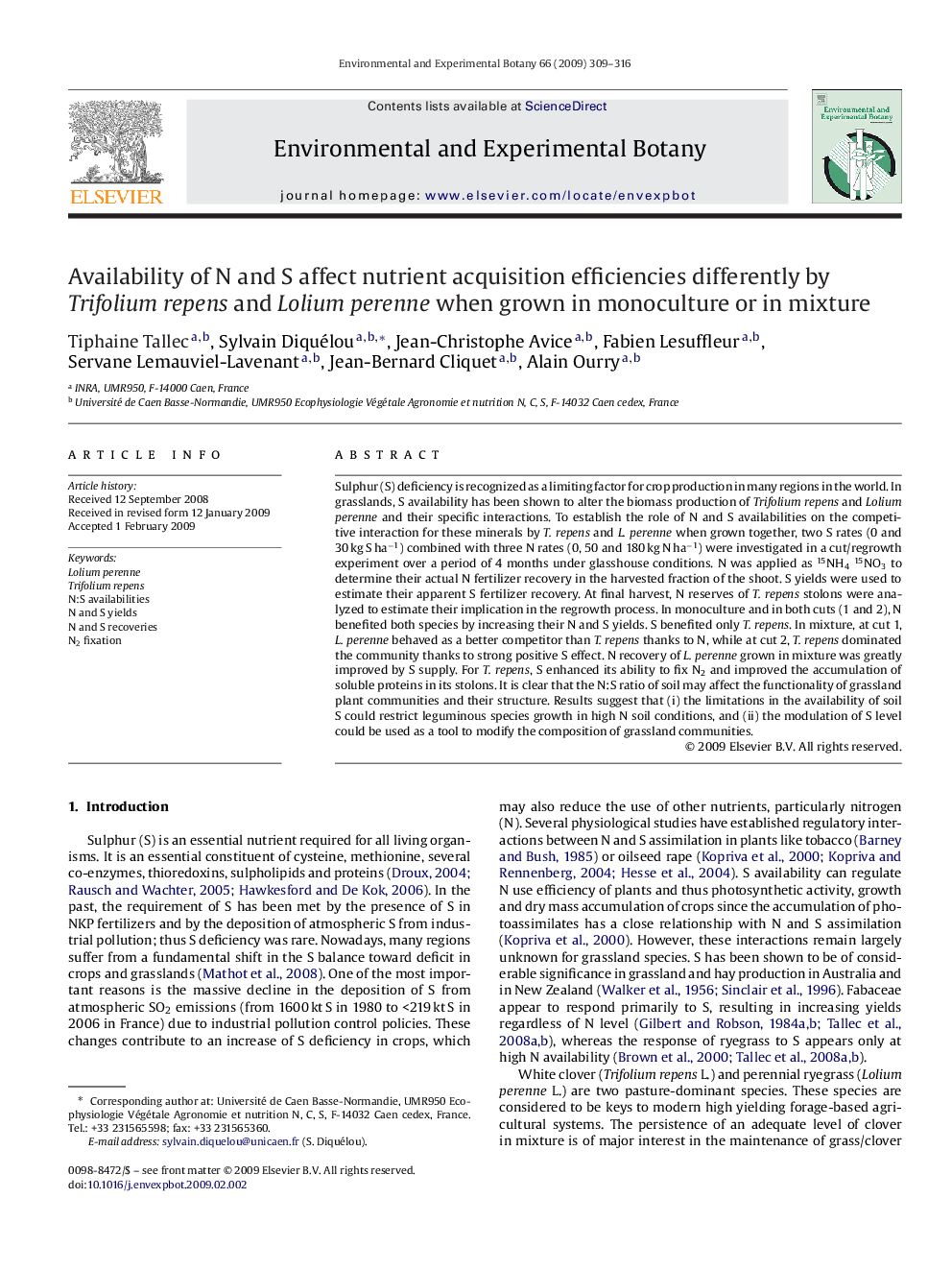| Article ID | Journal | Published Year | Pages | File Type |
|---|---|---|---|---|
| 4555126 | Environmental and Experimental Botany | 2009 | 8 Pages |
Sulphur (S) deficiency is recognized as a limiting factor for crop production in many regions in the world. In grasslands, S availability has been shown to alter the biomass production of Trifolium repens and Lolium perenne and their specific interactions. To establish the role of N and S availabilities on the competitive interaction for these minerals by T. repens and L. perenne when grown together, two S rates (0 and 30 kg S ha−1) combined with three N rates (0, 50 and 180 kg N ha−1) were investigated in a cut/regrowth experiment over a period of 4 months under glasshouse conditions. N was applied as 15NH415NO3 to determine their actual N fertilizer recovery in the harvested fraction of the shoot. S yields were used to estimate their apparent S fertilizer recovery. At final harvest, N reserves of T. repens stolons were analyzed to estimate their implication in the regrowth process. In monoculture and in both cuts (1 and 2), N benefited both species by increasing their N and S yields. S benefited only T. repens. In mixture, at cut 1, L. perenne behaved as a better competitor than T. repens thanks to N, while at cut 2, T. repens dominated the community thanks to strong positive S effect. N recovery of L. perenne grown in mixture was greatly improved by S supply. For T. repens, S enhanced its ability to fix N2 and improved the accumulation of soluble proteins in its stolons. It is clear that the N:S ratio of soil may affect the functionality of grassland plant communities and their structure. Results suggest that (i) the limitations in the availability of soil S could restrict leguminous species growth in high N soil conditions, and (ii) the modulation of S level could be used as a tool to modify the composition of grassland communities.
